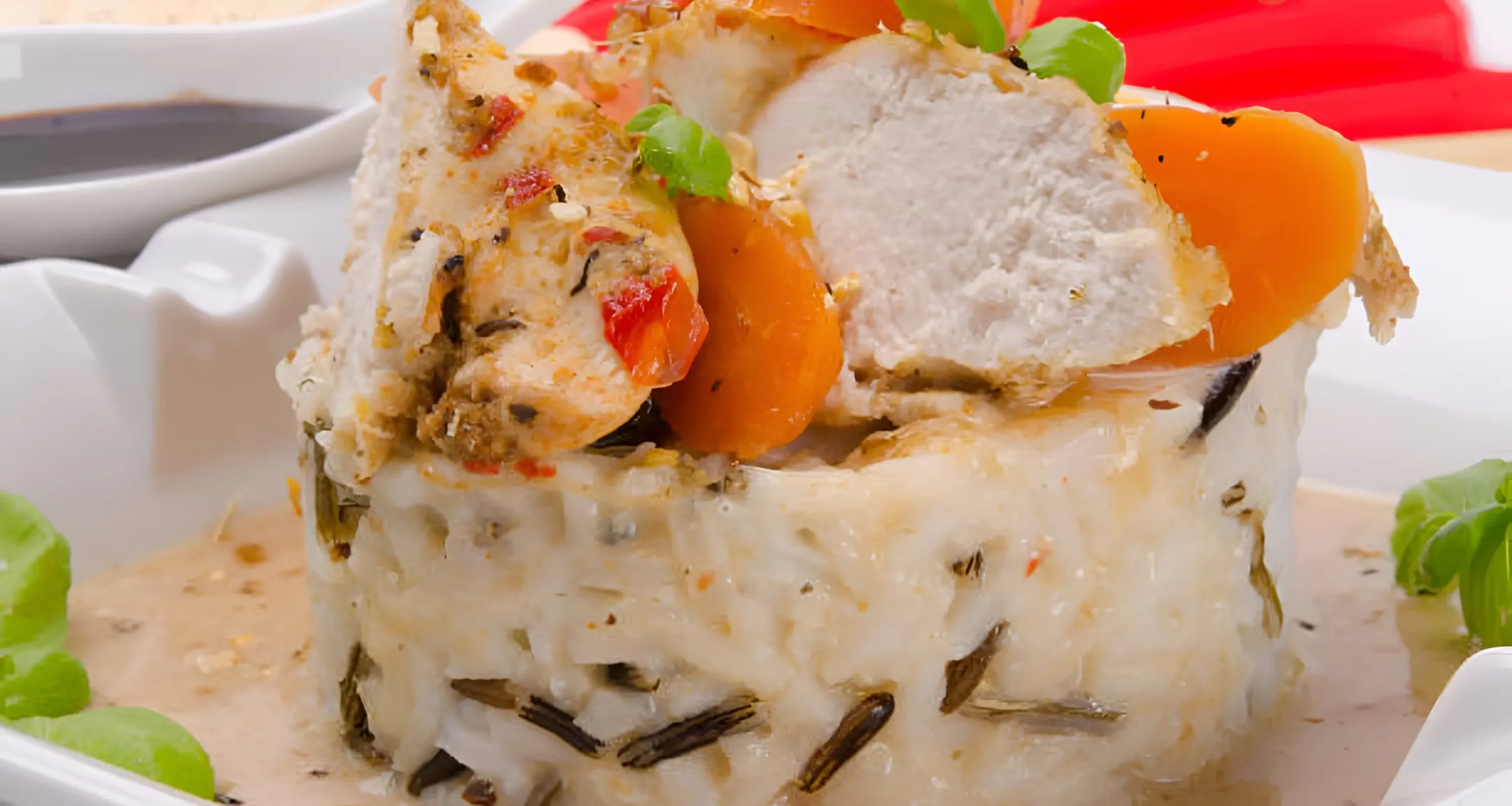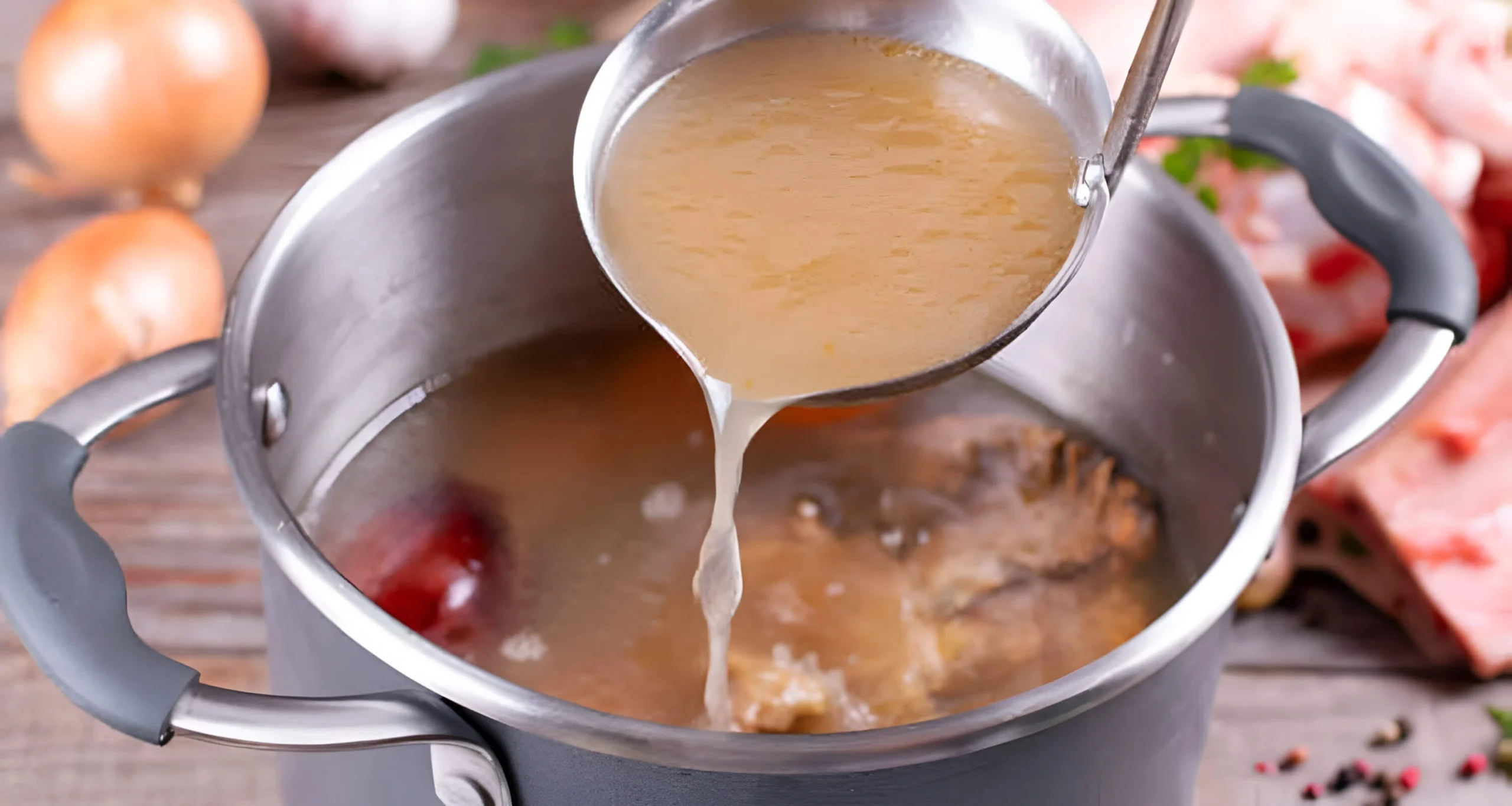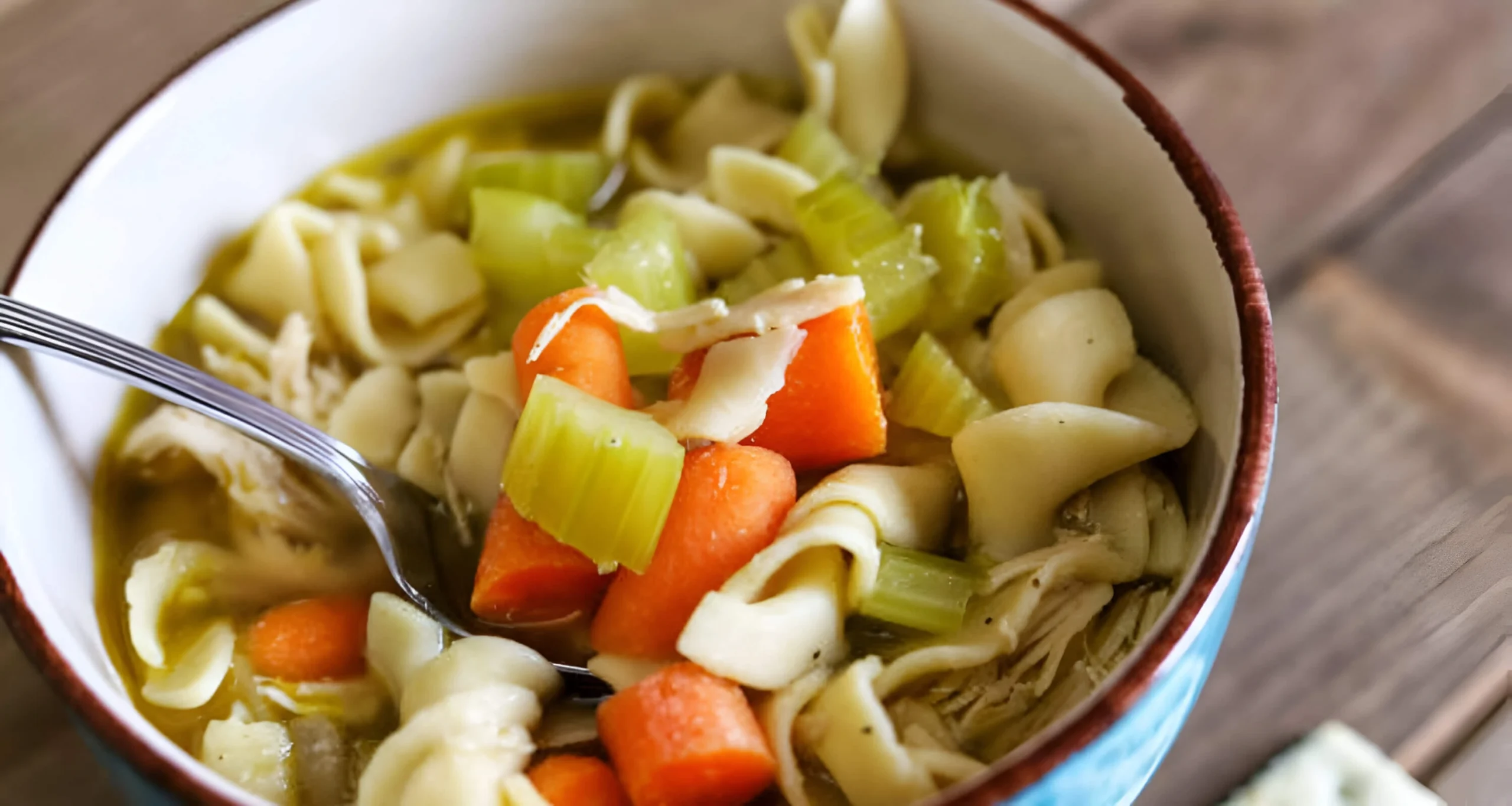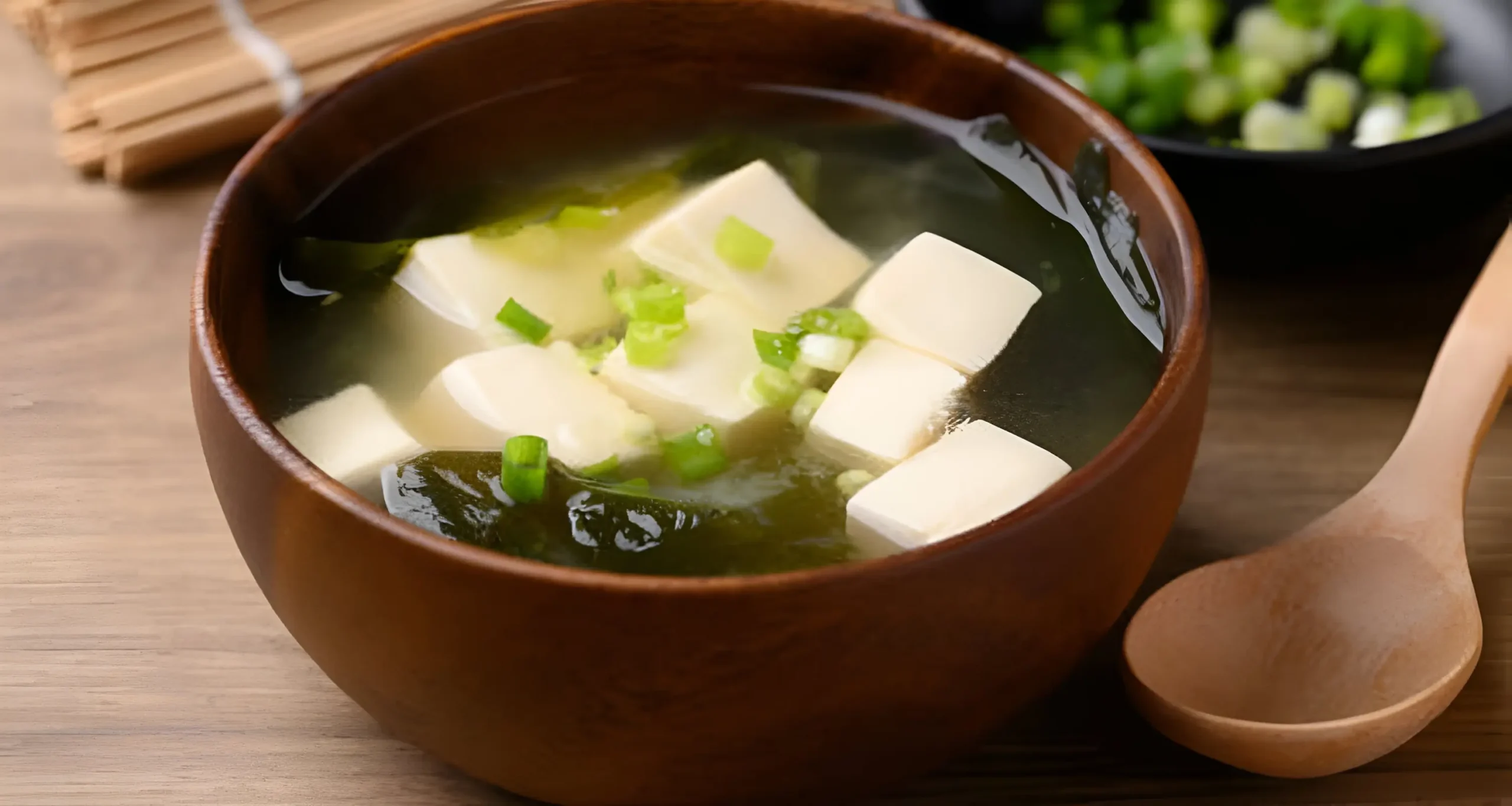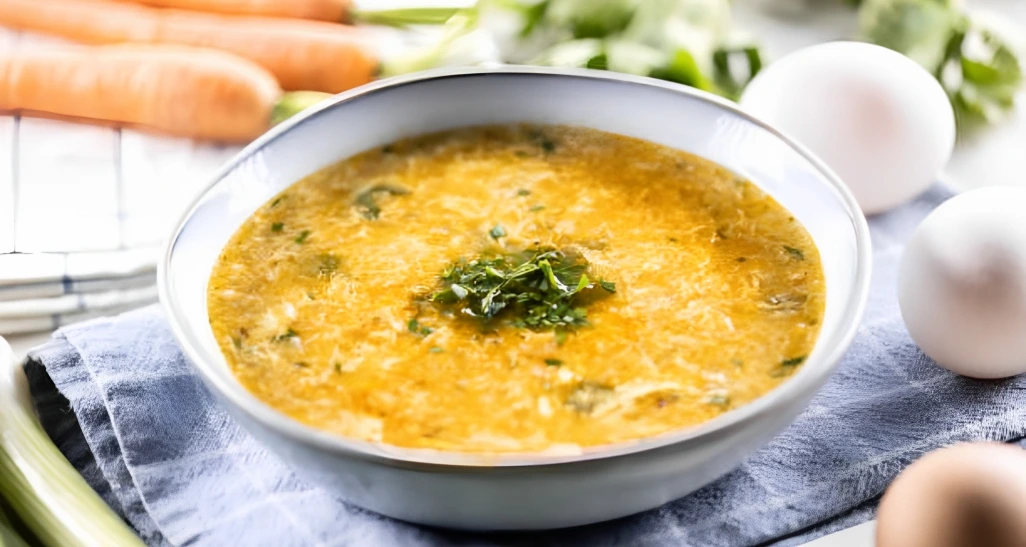Escarole and Bean Soup: A Timeless Italian Comfort Classic
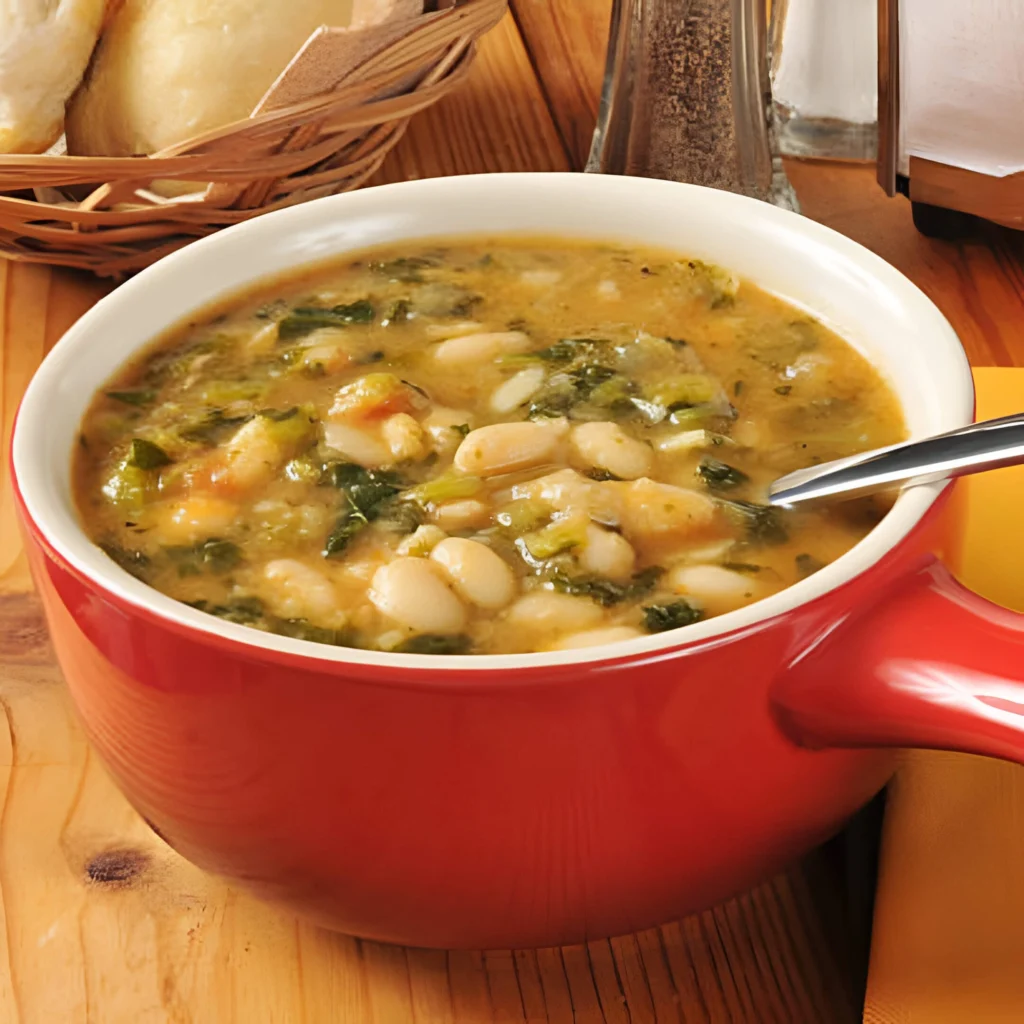
Explore Italian cuisine with a warm escarole and bean soup. It turns simple ingredients into a masterpiece. This soup is more than food; it’s a tradition passed down through generations.
Making this dish lets you enjoy rich flavors and health benefits of Italian food. The mix of tender beans and fresh escarole makes a fulfilling meal. It connects you to Italy’s rustic kitchens.
Starting your Italian cooking journey means learning about the right ingredients and techniques. This turns a simple soup into something special. Every spoonful shares a story of tradition, warmth, and skill.
Key Takeaways
- Discover the cultural significance of escarole and bean soup
- Learn authentic Italian cooking techniques
- Explore nutritional benefits of this classic dish
- Understand how simple ingredients create complex flavors
- Connect with traditional Italian home cooking
Understanding the Rich Heritage of Italian Bean Soups
Italian cuisine has a story of resilience and creativity. The escarole and beans recipe comes from a rich culinary history. Here, cooks turned simple ingredients into nourishing meals that have lasted through generations.
Bean soups mean more than just food in Italy. They stand for family, community, and the clever spirit of peasant cooking. Each Italian region adds its own twist to the escarole soup, using local ingredients and cooking methods passed down through generations.
Origins in Italian Peasant Cuisine
Peasant families made bean soups to feed their large families with little money. These dishes combined:
- Affordable dried beans
- Seasonal vegetables like escarole
- Minimal expensive proteins
- Simple cooking methods
Regional Variations Across Italy
Different Italian regions have their own bean soup styles. Tuscany might use cannellini beans, while Sicily adds local herbs and spices. This creates unique flavors that honor local traditions.
Cultural Significance in Italian Dining
Bean soups are more than just food in Italy. They symbolize family gatherings, shared moments, and a link to the land. Preparing these soups is an act of love, passing down recipes through generations.
Essential Ingredients for Authentic Escarole and Bean Soup
Making a tasty white bean and escarole soup needs the right ingredients. These ingredients should blend together to create rich, comforting flavors. The quality and freshness of each item are key to a successful soup.
The base of a great escarole bean soup is top-notch ingredients. Let’s look at the main parts that make your soup stand out:
- Fresh Escarole: Pick crisp, green leaves that are not yellow or wilted
- White Beans: Use Cannellini or Great Northern beans for a creamy texture
- Extra virgin olive oil for that true Italian taste
- Fresh garlic and onions for a strong aroma
- High-quality chicken or vegetable broth
Knowing how each ingredient works is key to making a real escarole bean soup. It should reflect traditional Italian cooking.
| Ingredient | Purpose | Recommended Quantity |
|---|---|---|
| Escarole | Provides leafy green nutrition | 2-3 large bunches |
| White Beans | Creates creamy base | 2 cans or 1 cup dried |
| Garlic | Adds depth of flavor | 4-6 cloves, minced |
| Olive Oil | Enhances overall taste | 3-4 tablespoons |
When making your white bean and escarole soup, remember quality is more important than quantity. Using fresh, local ingredients will make your dish amazing.
The Perfect Bean Selection for Your Soup
Choosing the right beans is key to a great escarole and bean soup. The right beans can turn a simple soup into a delicious meal.
When making soup escarole, knowing your bean options is important. The type of beans you pick will change the soup’s texture, taste, and quality.
Dried vs. Canned Beans: Making the Right Choice
Choosing between dried and canned beans is a big decision. Each has its own benefits for your escarole and bean soup:
- Dried Beans:
- More affordable
- Richer, deeper flavor
- Greater control over texture
- Canned Beans:
- Convenient and quick
- Consistent texture
- Perfect for time-sensitive cooking
Top White Bean Varieties for Soup
Not all beans are the same in escarole and bean soup. The best white beans are:
- Cannellini Beans: Creamy and smooth
- Great Northern Beans: Delicate and mild
- Navy Beans: Small but packed with flavor
Bean Preparation Techniques
Getting your beans ready right is essential for a perfect soup. If using dried beans, here’s what to do:
- Rinse beans thoroughly
- Soak overnight in cold water
- Drain and rinse before cooking
- Simmer gently to maintain bean integrity
“The secret to a great soup is in the details of bean preparation.” – Italian Cooking Wisdom
Learning about bean selection and preparation will make your escarole and bean soup amazing. Try different beans to find your favorite mix.
All About Escarole: Selecting and Preparing the Green
Escarole is a hidden gem in the world of leafy greens. It’s perfect for your escarole and beans recipe. This versatile vegetable belongs to the chicory family. It adds a unique flavor to white bean and escarole soup that home cooks love.
When selecting escarole at the market, look for these key characteristics:
- Crisp, bright green leaves with minimal wilting
- Firm texture without brown spots
- Compact, dense head with no signs of decay
- Vibrant color ranging from light to dark green
Preparing escarole requires careful cleaning to remove dirt and debris. Start by separating the leaves and rinsing them under cold water. Gentle handling prevents bruising and maintains the vegetable’s delicate structure.
Nutritional benefits make escarole an excellent addition to your soup. It’s packed with vitamins A and K, provides dietary fiber, and contains antioxidants. The slightly bitter taste adds depth to your white bean and escarole soup, creating a balanced and satisfying dish.
Before cooking, trim the bottom of the escarole and chop the leaves into bite-sized pieces. For soups, cut them into manageable sections that blend seamlessly with beans and other ingredients.
Pro tip: Younger, lighter-colored inner leaves are typically more tender and milder in flavor compared to the outer dark green leaves.
Kitchen Tools and Equipment You’ll Need
Making a tasty escarole bean soup needs more than just good ingredients. The right kitchen tools can make cooking easier and help you make a true Italian escarole soup.
When you start making your escarole and bean soup, you’ll need some key cookware and gadgets. These tools make cooking smooth and fun.
Essential Cookware for Soup Preparation
Choosing the right cookware is key for a delicious escarole bean soup. Here are the must-haves:
- Large Dutch Oven: Great for even heat and deep cooking
- Heavy-bottom stockpot with tight-fitting lid
- Sturdy wooden spoon for stirring
- Sharp chef’s knife for chopping veggies
Helpful Kitchen Gadgets to Streamline Soup Making
Modern tools can make making Italian escarole soup easier:
- Immersion blender for smooth soup
- Food processor for quick veggie prep
- Measuring cups and spoons for exact amounts
- Digital kitchen scale for precise ingredient amounts
“The right tools can turn a good recipe into an extraordinary culinary experience.” – Professional Chef
Quality kitchen equipment makes making escarole bean soup more efficient. It also ensures delicious results every time you cook.
Step-by-Step Guide to Making Escarole and Bean Soup
Making a tasty escarole and bean soup needs careful steps. This classic recipe brings Italian home cooking to your kitchen. Let’s make it easy with simple steps.
First, get all your ingredients and tools ready. Good preparation is essential for a delicious escarole and bean soup. It will wow your family and friends.
- Start by washing and chopping the fresh escarole thoroughly
- Rinse your white beans if using canned, or soak dried beans overnight
- Chop garlic, onions, and prepare your favorite Italian herbs
- Heat olive oil in a large pot over medium heat
- Sauté aromatics until fragrant and golden
Your cooking technique is important for escarole and bean soup. Slow simmering helps flavors mix well. Add beans and escarole gently, stirring now and then to avoid sticking.
- Keep heat at a gentle simmer
- Season with salt and pepper to taste
- Cook until beans are tender and escarole is wilted
Pro tip: Let your soup rest for 10-15 minutes before serving. This lets the flavors blend, making the soup richer and more satisfying.
Seasoning Secrets for the Perfect Flavor Balance
Making a great italian escarole soup is more than just mixing ingredients. The secret is in the seasoning. It turns a simple soup into a dish that will wow your taste buds.
To get the flavor right, you need to know how herbs and aromatics work together. The right mix can take your soup from good to amazing.
Traditional Italian Herb Combinations
Italian cooking is famous for its herb blends. For a true soup escarole, try these classic herb pairs:
- Fresh rosemary for earthy undertones
- Thyme to add subtle complexity
- Bay leaves for deep, rounded flavor
- Oregano for a bright, peppery note
Unlocking Garlic and Aromatic Potentials
Garlic is key to Italian taste. Fresh garlic cloves add a deep, irresistible flavor to your soup.
| Aromatic | Flavor Impact | Best Used |
|---|---|---|
| Fresh Garlic | Intense, Sharp | Sautéed at beginning |
| Roasted Garlic | Mellow, Sweet | Stirred in near end |
| Garlic Powder | Mild, Consistent | Final seasoning |
Pro tip: Crush garlic cloves instead of mincing to release maximum flavor without bitterness. Sauté them gently in olive oil to create a fragrant base for your soup.
Adding Protein: Variations with Meat and Seafood
Turn your white bean and escarole soup into a filling meal with protein. The right protein can make your soup a satisfying main dish. It’s perfect for those with big appetites.
Meat lovers can add several Italian favorites to their soup:
- Crispy pancetta for a salty crunch
- Spicy Italian sausage for robust flavor
- Tender chicken pieces for lean protein
Seafood fans can also make their soup more exciting. Try adding:
- Sweet tender clams
- Succulent shrimp
- Flaky white fish like cod or halibut
When adding proteins, cook them separately. Then add them towards the soup’s end. This keeps their texture and flavor. For seafood, add them just before serving to keep them tender.
Pro tip: Pick proteins that go well with escarole’s taste and white beans’ creaminess. Aim for a balanced dish where each ingredient complements the others.
Vegetarian and Vegan Adaptations of the Classic Recipe
Turning the traditional escarole and bean soup into a plant-based dish is exciting. It’s a great way for vegetarian and vegan fans to enjoy a tasty, healthy meal. Your escarole and beans recipe can become a nutritious, flavorful dish that fits many diets.
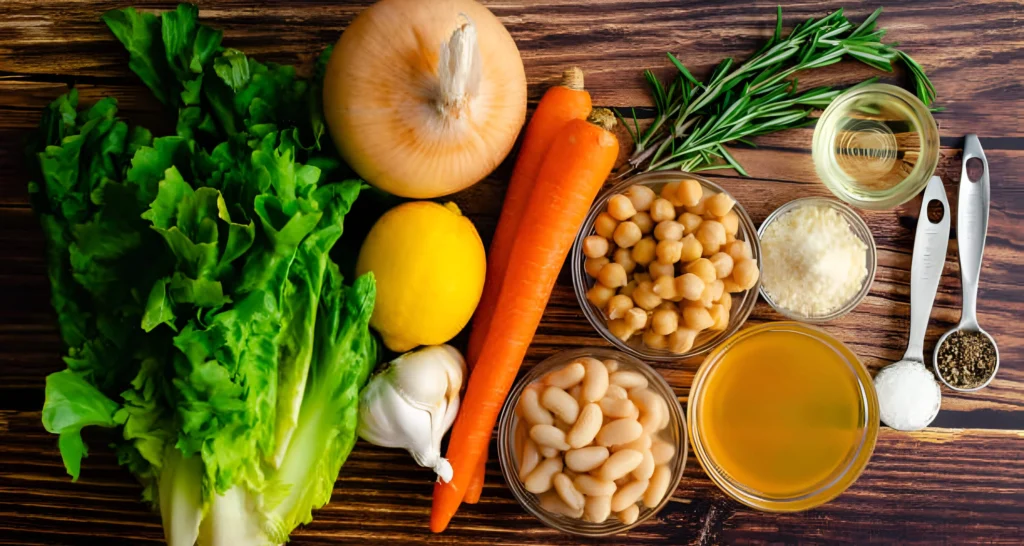
Plant-based diets don’t mean missing out on rich flavors. The secret to a fantastic vegetarian escarole and bean soup is choosing the right protein substitutes. Keep the authentic Italian taste in mind.
Plant-Based Protein Powerhouses
When making your escarole and bean soup, think about these protein-rich options:
- Tempeh: A fermented soy product with a hearty texture
- Seitan: Wheat-based protein with a meaty consistency
- Tofu: Silken or firm varieties blend perfectly in soups
- Nutritional yeast: Adds a cheesy flavor and protein boost
Preserving Authentic Italian Flavors
To keep the essence of traditional escarole and bean soup, focus on seasoning. Here’s how to ensure an authentic taste:
- Roast garlic and herbs before adding to intensify flavors
- Use high-quality vegetable broth as a base
- Include fresh herbs like rosemary and thyme
- Finish with a drizzle of good olive oil
Your vegetarian escarole and bean soup can be just as satisfying and delicious as the classic version. It shows that plant-based cooking has no limits.
Serving Suggestions and Accompaniments
Your italian escarole soup needs the right friends to make it special. The right sides can turn a simple soup into a feast for the senses.
Italian bread is a classic choice for soup escarole. Here are some tasty options:
- Crusty ciabatta slices
- Warm focaccia
- Toasted rustic sourdough
- Garlic-rubbed crostini
Adding sides that match your soup makes for a complete meal. Try these great pairings:
| Side Dish | Flavor Profile | Complementarity |
|---|---|---|
| Caprese salad | Fresh and light | Balances soup’s richness |
| Antipasto platter | Savory and varied | Adds texture and depth |
| Marinated olives | Tangy and briny | Enhances overall taste |
How you present your soup is as important as its taste. Serve it in wide, shallow bowls to show off its colors. Add fresh herbs or a drizzle of olive oil for a pop of color and flavor.
At gatherings, offer grated Parmigiano-Reggiano on the side. This lets guests add their own touch with a sprinkle of cheese.
Storage Tips and Reheating Methods
Keeping your homemade escarole bean soup fresh is key. Whether you made a big batch or saved leftovers, the right storage and reheating methods are essential. This way, your soup stays delicious and safe to eat.
Cooling Your Soup Safely
Here’s how to cool your white bean and escarole soup safely:
- Let the soup cool to room temperature within 2 hours
- Use shallow containers to cool it faster
- Don’t leave hot soup on the counter for too long
Freezing Techniques for Long-Term Storage
Freezing your escarole bean soup is easy with the right steps:
- Let the soup cool completely before freezing
- Use containers that are safe for the freezer with tight lids
- Leave about 1 inch of space at the top for expansion
- Mark the containers with the date and what’s inside
Reheating to Maintain Quality
To keep your stored escarole bean soup fresh, follow these reheating tips:
- Thaw frozen soup in the fridge overnight
- Reheat it on the stovetop over medium-low heat
- Stir it often to avoid burning
- Add a bit of water or broth if it’s too thick
Pro tip: Enjoy your frozen white bean and escarole soup within 3 months for the best taste and nutrition.
Troubleshooting Common Soup Issues
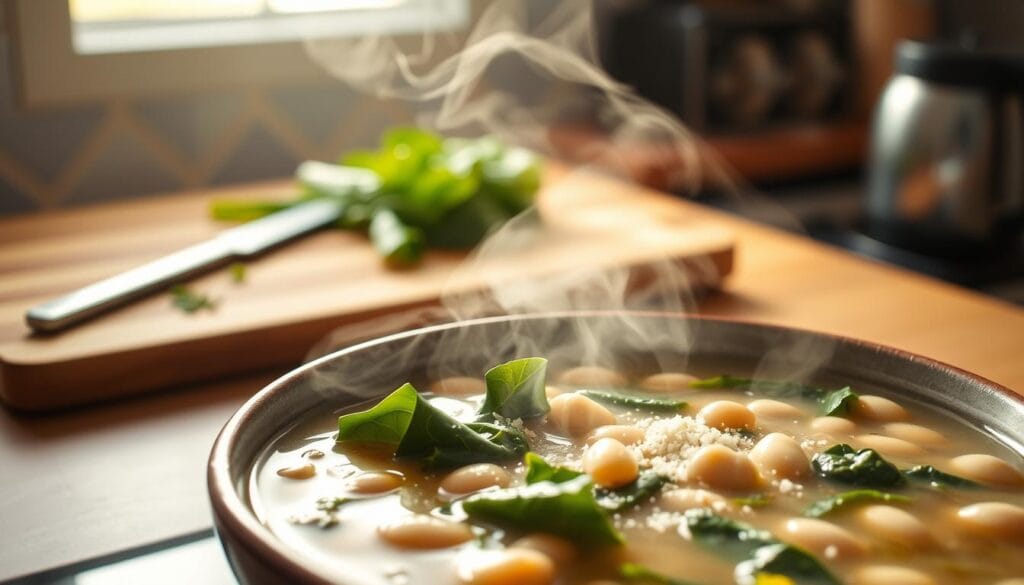
Making the perfect escarole and bean soup can be tricky. Even skilled cooks face problems sometimes. Knowing how to fix common issues will help you make a tasty escarole and beans recipe every time.
Don’t worry if your escarole and bean soup isn’t perfect. Here are some easy solutions to common problems:
- Soup Too Thin: If your soup is too thin, try these quick fixes:
- Mash some beans against the pot side to create natural thickening
- Add a small amount of cornstarch mixed with cold water
- Incorporate additional pureed beans
- Bland Flavor Profile: Improve the taste with:
- Extra fresh garlic
- A splash of good quality olive oil
- Freshly ground black pepper
- Grated Parmesan cheese
- Uneven Bean Cooking: Prevent partially cooked beans by:
- Soaking dried beans overnight
- Using fresh or recently purchased dried beans
- Checking bean tenderness during cooking
Remember, patience is important when making escarole and bean soup. Slow cooking makes beans tender and greens perfectly wilted. Each batch might need a little tweak, so trust your instincts and taste as you go.
Health Benefits of Escarole and Bean Soup
Your favorite Italian escarole soup is not just tasty—it’s also super healthy. It’s full of nutrients that help keep you well. White bean and escarole soup is a great mix of good stuff for your body.
Escarole is a big player in this dish. It’s loaded with vitamins A, K, and C. These vitamins boost your immune system and help your eyes stay healthy. Plus, it’s got fiber for your gut and keeps your blood sugar steady.
- Supports heart health with low-sodium ingredients
- Provides essential plant-based protein
- Delivers significant antioxidant protection
- Promotes digestive wellness
White beans add a lot to the soup too. They’re packed with:
- Protein for muscle upkeep
- Dietary fiber for regular digestion
- Important minerals like magnesium and iron
- Complex carbs for lasting energy
Adding this soup to your meals means you’re choosing something good for your heart. It gives you energy that lasts and gives your body the nutrients it needs.
Conclusion
Your journey into escarole and bean soup shows it’s more than just food. It’s a link to Italy’s rich cooking history. By learning to make this soup, you open a door to real Italian cooking that warms your heart.
This soup is simple yet full of possibilities. It’s perfect for both experienced cooks and beginners. You can try different beans and spices to make it your own. Each spoonful tells a story of Italian cooks who made something special from simple ingredients.
Let this soup inspire you as you explore Italian food. The skills you learn, like picking the right beans and mixing flavors, will help you in many recipes. Great cooking is about passion, practice, and sharing meals with loved ones. Your escarole and bean soup is a celebration of tradition, taste, and the joy of cooking at home.
Start this tasty journey, appreciate the simplicity, and savor every bite of your homemade Italian classic. Your kitchen now connects you to generations of cooking wisdom and your own creativity.
FAQ
What is escarole and bean soup?
Escarole and bean soup is a classic Italian dish. It has tender white beans and leafy escarole. It’s seasoned with garlic, herbs, and olive oil. This soup is hearty and nutritious, coming from traditional peasant cuisine.
What type of beans work best for this soup?
Cannellini and Great Northern beans are the best choices. They have a creamy texture and mild flavor. This complements the slightly bitter escarole perfectly.
Can I make this soup vegetarian or vegan?
Yes, you can! The basic recipe is vegetarian. To make it vegan, use vegetable broth and avoid animal products. Nutritional yeast can add a nice flavor.
How long does escarole and bean soup keep in the refrigerator?
It keeps for 3-4 days in the fridge. Store it in an airtight container. Cool it down before storing and reheat well before eating.
Is escarole and bean soup healthy?
Yes, it’s very healthy! It’s full of plant-based protein, fiber, vitamins, and minerals. Beans offer great protein and fiber. Escarole adds vitamins A, C, and K, making it heart-healthy and nutrient-rich.
Can I freeze escarole and bean soup?
You can freeze it for up to 3 months. For the best texture, slightly undercook the escarole before freezing. Add fresh escarole when reheating to keep it crisp.
What herbs work well in escarole and bean soup?
Italian herbs like rosemary, thyme, oregano, and bay leaves are great. Fresh parsley adds extra flavor and brightness as a garnish.
How can I make the soup more substantial?
Add Italian sausage, pancetta, or roasted vegetables like carrots and zucchini for more filling. A drizzle of olive oil and crusty bread can also enhance the meal.
Add a Dash of Your Thoughts!
There are no reviews yet. Be the first one to write one.


